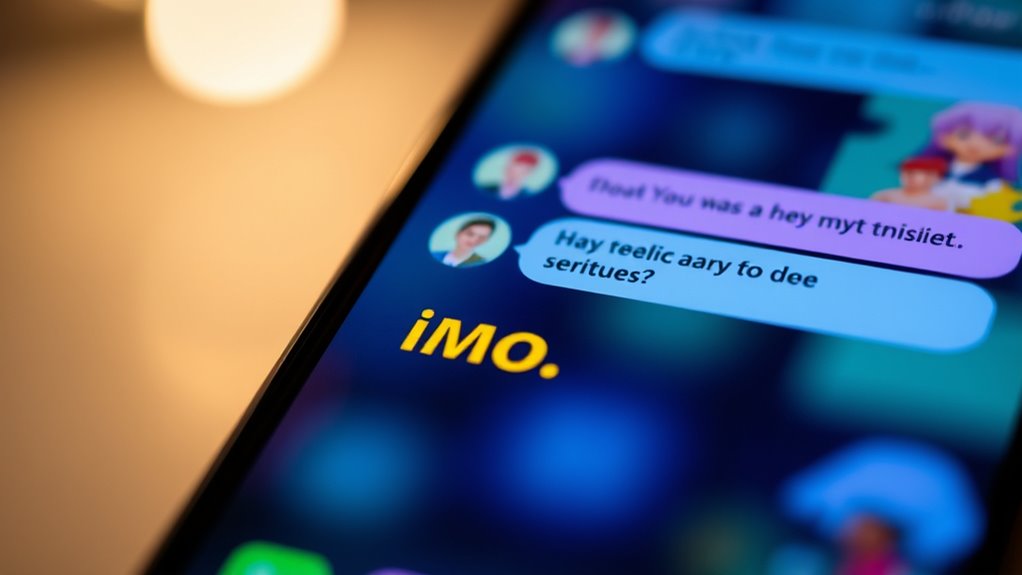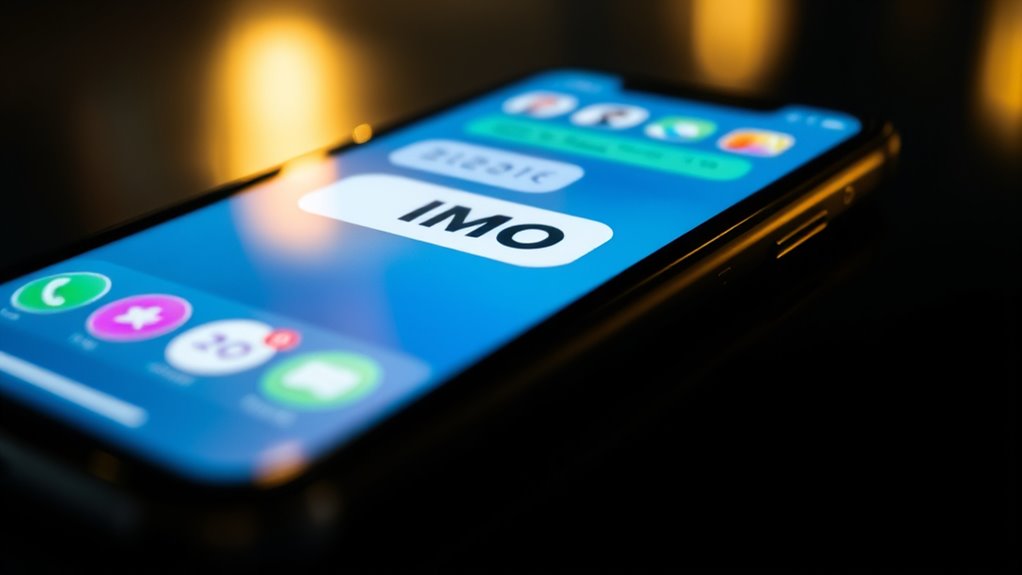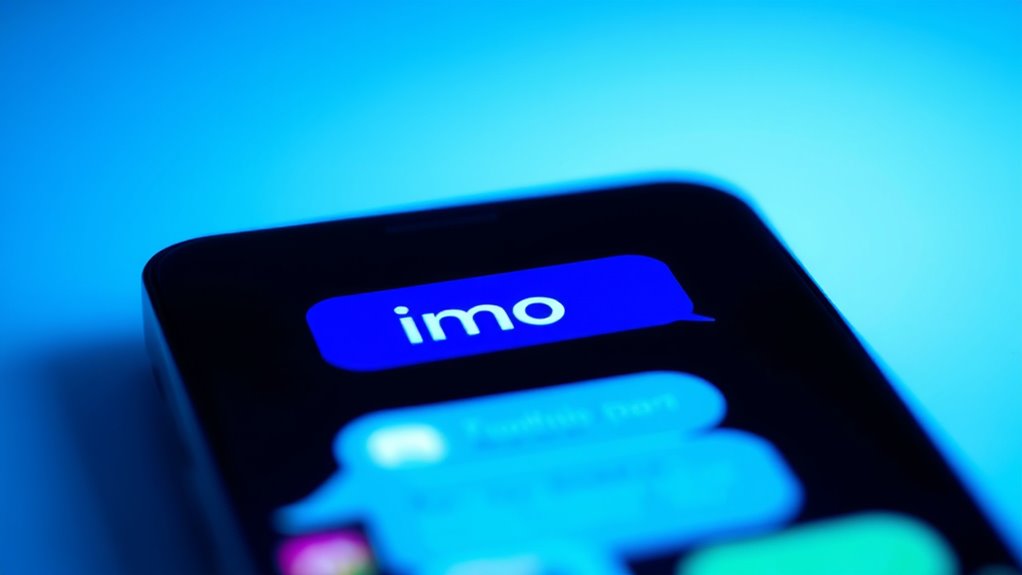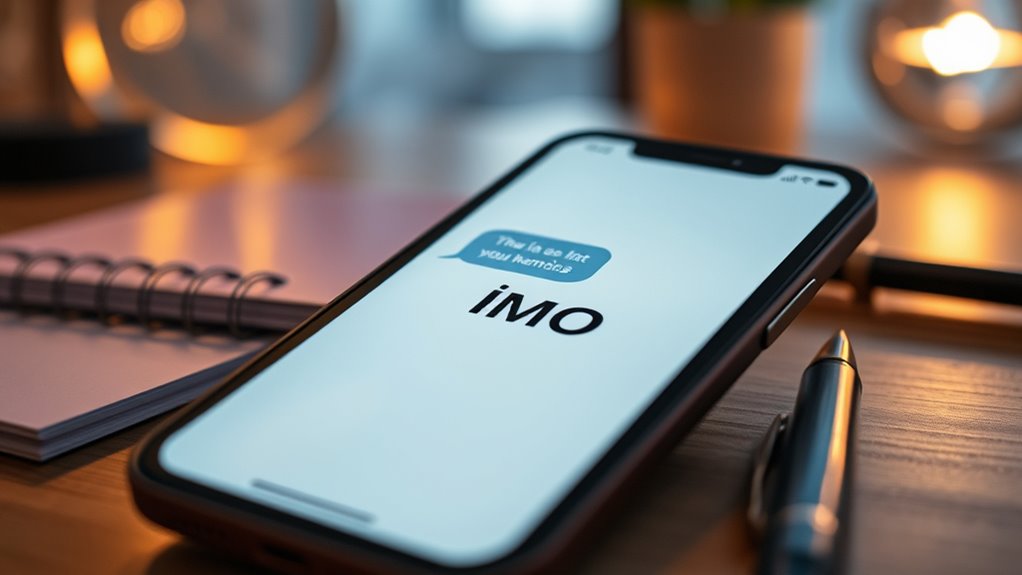In text and online chats, IMO stands for “In My Opinion.” People use it to quickly share their personal perspectives politely and clearly. It originated from early digital chats and has become common in social media comments and conversations. Style and tone can vary with similar abbreviations like IMHO or IMNSHO. Understanding these offers a better grasp of online communication, and if you keep exploring, you’ll learn more about how they shape digital conversations.
Key Takeaways
- IMO is an abbreviation for “In My Opinion,” used to express personal viewpoints in digital communication.
- It originated from online chat rooms and instant messaging to share opinions quickly.
- Commonly used in social media comments, group chats, and informal messages to clarify stance.
- Variations include IMHO (“In My Humble Opinion”) and IMNSHO (“In My Not-So-Humble Opinion”).
- Best suited for casual conversations; generally inappropriate in formal or professional contexts.
The Meaning of IMO

Have you ever wondered what IMO stands for in a text message? The history of internet slang shows how abbreviations like IMO have evolved over time to make digital communication faster and more efficient. Originally, texting abbreviations emerged from early online chat rooms and instant messaging platforms, where users sought quick ways to relay messages. Over the years, these shortcuts became more popular and standardized, shaping the evolution of texting abbreviations. IMO, which stands for “In My Opinion,” is just one example of how users express personal thoughts succinctly. Its simplicity and clarity have helped it become a common part of digital conversations, reflecting the ongoing trend of abbreviating language to keep up with fast-paced, informal communication. Additionally, the use of abbreviations like IMO can often mirror communication styles in various online communities.
Origin and Usage of IMO

The origin of IMO can be traced back to early internet chat rooms and instant messaging platforms, where users needed quick ways to share their personal opinions. As online slang evolved, abbreviations like IMO became popular for saving time and effort during conversations. This abbreviation history reflects a trend toward concise communication, especially in fast-paced digital environments. IMO stands for “In My Opinion,” and its use spread quickly across various online communities, becoming a common shorthand. Its simplicity made it easy to incorporate into casual chats, social media posts, and messaging apps. Over time, IMO has become a staple in online slang, helping users express their viewpoints efficiently without lengthy explanations. Its origin highlights how digital communication continues to shape language. Additionally, the widespread adoption of abbreviations like IMO exemplifies whatever want, demonstrating the influence of digital culture on conversational styles.
Common Contexts for IMO

You’ll often see IMO used in online discussions to express personal opinions or viewpoints quickly. It’s common in casual slang, especially when people want to share their thoughts without seeming too formal. IMO appears in various contexts, including:
- Debates or disagreements — to politely voice your perspective.
- Social media comments — to give an honest opinion while maintaining online etiquette.
- Group chats or forums — to clarify your stance during casual conversations.
Using IMO helps keep conversations respectful and clear, even when opinions differ. It’s a handy tool for steering through online etiquette, ensuring your personal views are understood without causing misunderstandings. In informal exchanges, IMO is a quick way to share your take without over-explaining. Additionally, understanding the context of water-related activities can help you better interpret discussions involving water parks, hydrotherapy, or aquatic exercise.
How to Interpret IMO in Conversations

Interpreting IMO in conversations requires understanding its role as a quick indicator of personal opinion. In digital communication, IMO helps you grasp the sender’s perspective instantly. Recognize that IMO is often used as online slang to soften statements or clarify opinions. To interpret it effectively, consider the context and tone of the message. Sometimes, IMO signals a genuine belief, while other times, it indicates a polite disagreement. Here’s a quick guide:
| IMO Usage | Typical Meaning |
|---|---|
| Emphasizing a point | Personal opinion or judgment |
| Softening criticism | Polite disagreement or doubt |
| Clarifying belief | Expressing a personal view |
Understanding these nuances enhances your ability to navigate online conversations confidently. Decoding modern slang helps you stay ahead in youth culture and social media interactions.
Variations of IMO and Similar Acronyms

Have you noticed that there are several variations of IMO and similar acronyms used in online chats? These variations reflect the emotional tone and language evolution in digital communication. For example:
- IMHO – “In my humble opinion,” often used to soften disagreements.
- IMO2 – A playful twist on IMO, emphasizing a stronger personal belief.
- IMNSHO – “In my not-so-humble opinion,” adding humor or sarcasm.
These acronyms show how language adapts to express nuances and emotional tones more effectively. As online conversations become more casual, such variations help convey personality and context, highlighting the dynamic nature of digital language. Recognizing these shifts enhances your understanding of how communication evolves in the digital age. Additionally, understanding acronym variations can improve your ability to interpret online messages accurately.
Examples of IMO in Text Messages

In everyday text messages, IMO frequently appears to share personal opinions or subtly influence the conversation. You might see it when friends express their beliefs or judgments quickly, often using online slang or texting abbreviations. For example, someone might say:
| Context | Example | Explanation |
|---|---|---|
| Personal opinion | “IMO, that movie was overrated.” | Sharing a view on entertainment. |
| Advice | “IMO, you should try the new restaurant.” | Giving a suggestion subtly. |
| Disagreement | “IMO, that’s not the best way.” | Expressing a differing opinion. |
These examples show how IMO helps convey opinions efficiently, making your messages sound more personal and engaging without sounding too formal. Additionally, practicing stillness can enhance your self-awareness, aiding clearer communication and understanding in conversations.
Differences Between IMO and Other Online Abbreviations

While IMO is primarily used to express personal opinions, other online abbreviations serve different functions in digital conversations. Understanding these differences helps you navigate online slang more effectively. Here are three key distinctions:
- Purpose: Some abbreviations, like LOL or BRB, convey reactions or statuses, while IMO shares your personal view.
- Function: Others, such as ASAP or FYI, inform or request action, contrasting with IMO’s opinion-sharing role.
- Evolution: As abbreviation evolution continues, some terms become more casual or specialized, highlighting shifts in online slang usage. Additionally, projector technology plays a significant role in creating immersive entertainment experiences, much like understanding online abbreviations enhances digital communication.
Knowing these differences allows you to choose the right abbreviation based on context, ensuring your messages are clear and appropriate in digital chats.
When to Use IMO Appropriately

You should consider the context before using IMO, as it’s best suited for casual conversations with friends or peers. Avoid using it in formal communications like work emails or professional messages. Knowing when and where to use IMO helps keep your tone appropriate and respectful. Additionally, understanding decoding slang can improve your overall communication skills and help you interpret informal language more accurately.
Context Matters Most
Understanding when to use IMO depends heavily on the context of your conversation. If you’re unsure, consider these key points:
- Recognize that emoji interpretations can vary, so using IMO helps clarify your opinion without sounding too forceful.
- Be aware of slang evolution; as language shifts, so do the ways people interpret messages, making IMO useful for softening statements.
- Use IMO when your input might be subjective or controversial, helping to show you’re sharing your personal view rather than stating an absolute fact.
- Remember that digital communication often relies on cues like IMO to convey tone and intent accurately.
In conversations where tone might be misunderstood, applying IMO signals that you’re offering an opinion, not a definitive answer. Context guarantees your message stays respectful and clear, especially in digital discussions.
Use in Casual Settings
In casual conversations, using IMO can help keep the tone friendly and non-confrontational. It’s common in online slang and digital communication, where brevity and tone matter. When you want to share your opinion without sounding too forceful, IMO is a great choice. It signals that what you’re saying is your personal view, not a fact. You can use it in texts, social media comments, or chat messages to add a polite, informal touch. Just remember, it’s best suited for informal settings where everyone understands the shorthand. Using IMO appropriately in casual conversations shows you’re respectful of others’ opinions while keeping the mood light and conversational. It’s a simple way to express yourself without sounding overly serious or confrontational. Additionally, understanding the meaning of IMO can help you communicate more effectively in various digital contexts.
Avoid Formal Communications
Is it always appropriate to use IMO in formal communications? Usually not. IMO is a piece of online slang best suited for casual chats, not professional emails or official documents. Using IMO in formal contexts can violate digital etiquette and seem unprofessional. To decide when to avoid IMO, consider these points:
- Formal tone required: Stick to clear, traditional language in official messages.
- Audience expectations: If your recipient expects professionalism, skip informal abbreviations.
- Respect for context: Recognize that online slang might undermine your credibility in serious conversations.
- Understanding of digital etiquette: Awareness of proper communication norms helps maintain credibility and professionalism.
Using IMO in formal settings can confuse your message or appear disrespectful to the norms of digital etiquette. Save IMO for casual exchanges and maintain professionalism when necessary.
Cultural and Regional Differences in Using IMO

Cultural backgrounds influence how people interpret and use IMO in conversations, so its meaning can vary across regions. In some areas, it might be a casual way to share opinions, while in others, it could carry more formal or nuanced connotations. Understanding these regional differences helps you communicate more effectively and avoid misunderstandings. Additionally, being aware of affiliate disclosures and privacy policies related to online communication can help ensure transparent and respectful interactions.
Cultural Contexts Shaping Usage
Different regions and communities often have unique ways of interpreting and using “IMO” in text conversations. Cultural contexts influence how this abbreviation evolves and integrates into daily slang. Here are three key points to contemplate:
- Linguistic evolution: As language changes, “IMO” adapts differently across cultures, reflecting local communication styles.
- Slang adoption: Some communities quickly embrace “IMO” as part of their online vernacular, shaping its meaning and tone.
- Regional nuances: In certain areas, “IMO” may carry additional connotations, influenced by cultural attitudes toward modesty, opinion sharing, or formality.
- Additionally, the way “IMO” is perceived can vary based on the cultural and regional differences, affecting how openly people express opinions in different communities.
Regional Variations in Communication
As the way people use “IMO” varies across regions, understanding these differences can reveal much about local communication styles. In some areas, “IMO” might be seen as formal, while elsewhere, it’s casual or even playful. Regional slang and linguistic variations influence how you interpret or respond to it. For example:
| Region | Common Usage | Cultural Note |
|---|---|---|
| North America | Frequently used in texting | Reflects direct, concise communication |
| Europe | Sometimes replaced with local slang | Shows blending of languages and styles |
| Asia | Less common, replaced by context | Emphasizes indirect, respectful tone |
Recognizing these nuances helps you connect better and avoid misunderstandings across cultures.
Tips for Understanding Internet Abbreviations Like IMO

To understand internet abbreviations like IMO, it helps to recognize common patterns and context. Online slang evolves quickly, so paying attention to how abbreviations are used can improve your comprehension. Here are three tips:
- Look for clues in the conversation to understand the meaning based on the topic.
- Familiarize yourself with popular texting etiquette to interpret tone and intent.
- Keep a reference list of common abbreviations like IMO, LOL, and BRB for quick recognition.
- Recognizing the beneficial ingredients in skincare can also help you understand product descriptions and reviews more effectively.
Frequently Asked Questions
Is IMO Used More in Formal or Informal Communication?
You’ll find IMO used more in informal communication rather than formal settings or professional communication. It’s a shorthand that helps you express your opinion casually, often in texts or social media. In formal environments, people prefer complete sentences and clear language without abbreviations. So, if you want to sound professional or adhere to formal communication standards, avoid using IMO. Instead, state your opinion directly and clearly.
Can IMO Be Confused With Similar Acronyms?
You might find that IMO can be confused with similar acronyms like IMHO or IOU, which can lead to misunderstandings. About 30% of people mistake it for other terms because of Acronym similarities. Contextual differences help clarify meaning, but if you’re unsure, it’s best to verify. Recognizing these nuances ensures your message stays clear, especially since acronyms often depend heavily on how and where you use them.
How Has the Usage of IMO Evolved Over Time?
You’ll notice that the evolution of texting abbreviations, like IMO, has made online conversations more efficient and expressive. Over time, IMO has gained widespread adoption across cultures, becoming a common way to express personal opinions briefly. Its usage has expanded from casual chats to formal communication in some contexts, reflecting how digital language adapts and spreads globally. This evolution shows how abbreviations like IMO enhance clarity and connection in digital conversations.
Are There Specific Age Groups That Use IMO More Frequently?
You might notice that younger age groups, especially teens and early twenties, use IMO more frequently, like a trending song that everyone wants to share. According to regional differences, teens in North America and Europe tend to prefer IMO for quick, informal communication. Older users often opt for more formal expressions, making IMO the linguistic equivalent of a casual chat. Your age influences how often and where you see IMO in conversations.
Does the Meaning of IMO Vary Across Different Online Communities?
You’ll find that the meaning of IMO can vary across different online communities due to contextual variations and cultural differences. In some groups, it’s seen strictly as “In My Opinion,” while others might interpret it more broadly or casually. Cultural nuances influence how people use IMO, affecting its tone and significance. So, always consider the specific community’s context to understand how IMO is being used and what it truly conveys.
Conclusion
Understanding IMO is like decoding a secret message in a busy chat, where quick abbreviations paint a vivid picture of your thoughts. Just as a whisper can carry a world of meaning amid noisy conversations, IMO captures your opinion amidst the chaos. Remember, using it thoughtfully adds clarity rather than confusion. So, next time you see or use IMO, think of it as a small but powerful bridge—connecting ideas in a fleeting digital moment.









